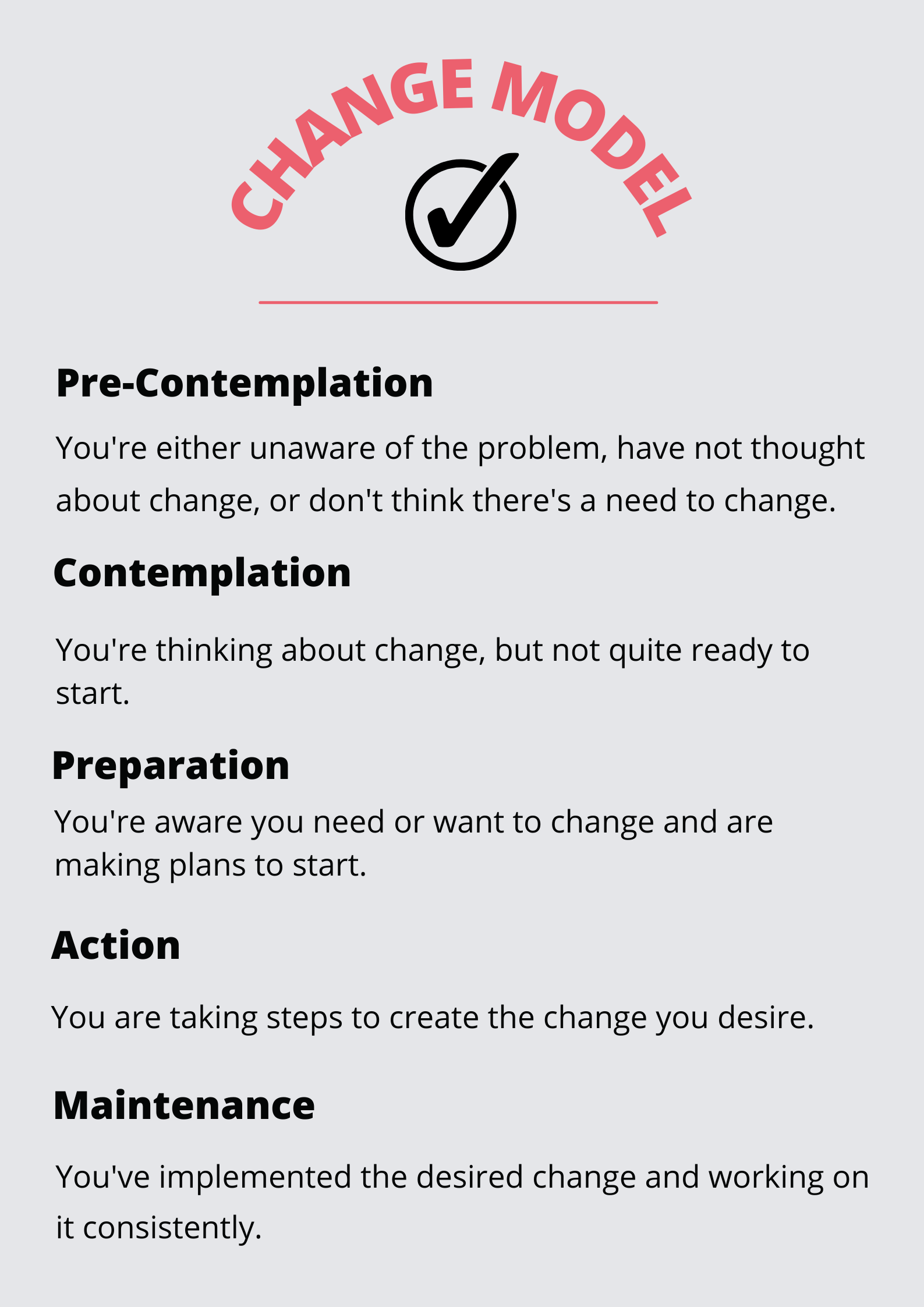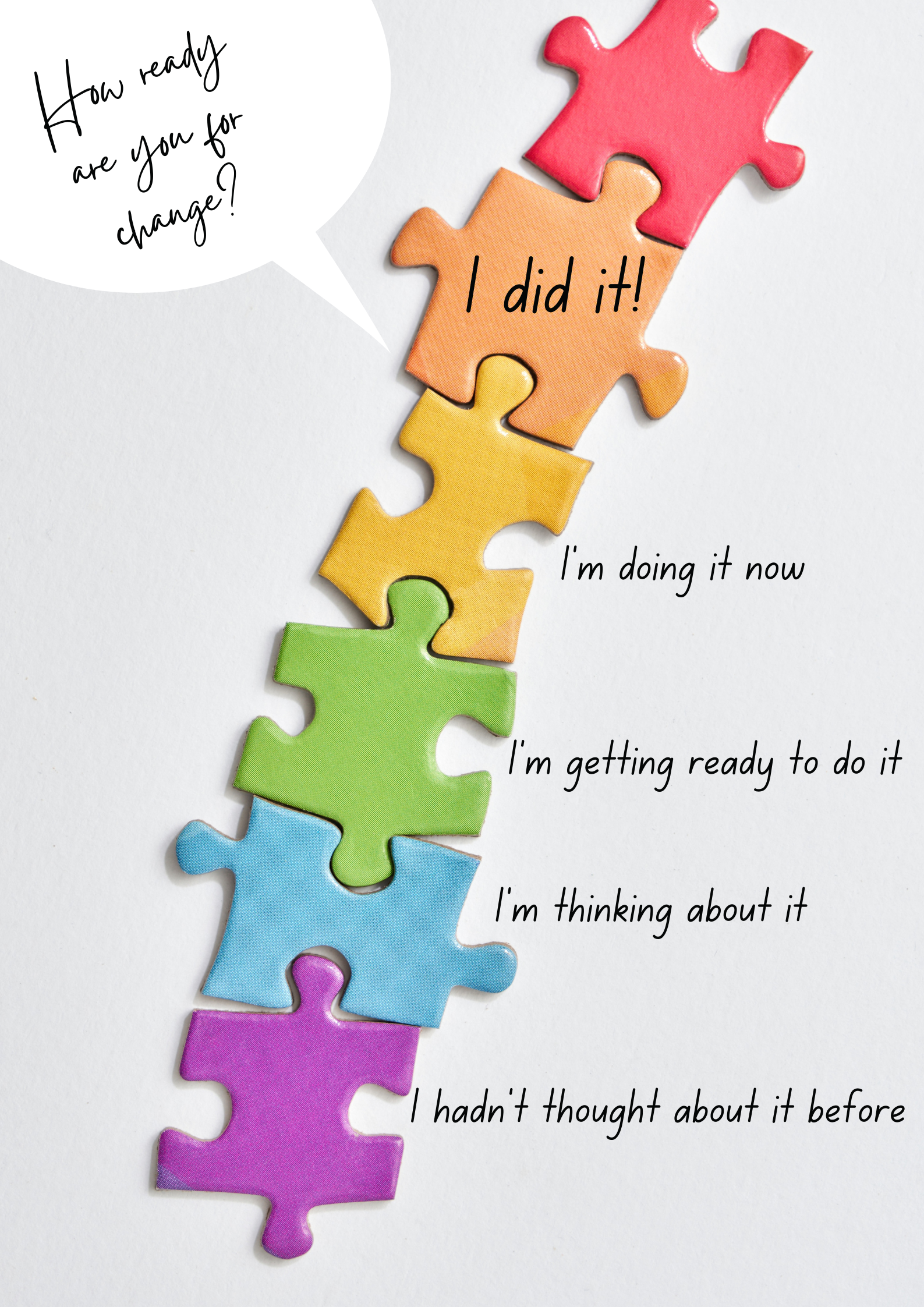Series: Live Your Best Life

This post in the summer blog series, Live Your Best Life, looks at three mind shifts that can help expand your comfort zone to reach your goals a little easier.
- Self-efficacy
- Readiness to change
- Self-limiting beliefs
What Does Research Show about New Year’s Resolutions?
A 2020 research study investigated the impact and success rate of New Year’s resolutions among a group of ordinary people. They made resolutions about their physical health, weight loss, and eating habits.
The researchers measured approach-oriented goals (e.g., studying hard to get good grades), and avoidance-oriented goals (e.g. following rules to avoid negative consequences). Among the thousand or so participants, those with approach-oriented goals had greater success (58.9%) than those with avoidance-oriented goals (47.1%).
How did they do it?
The more successful goal-setters tapped into three mindsets:
- self-efficacy,
- skills necessary to change, and
- readiness to change.
Self-Efficacy
Self-efficacy refers to an individual’s belief in his or her capacity to execute behaviours necessary to produce specific performance attainments (Bandura, 1977, 1986, 1997)
AMERICAN PSYCHOLOGICAL ASSOCIATION
Self-efficacy involves having a sense of control over your motivation, behaviours, and social environment. It relates to how much self-directed effort you put into your goals.
Belief System
The reason that well-meaning goal-setters abandon goals and seem unable to reach lasting change, traces back to their thought life and belief system. Specifically, what you believe about yourself and your ability and readiness to grow towards your highest self.
Cognitive distortions, or something psychiatrist, David Burns terms ‘thinking errors‘ are exaggerated, inaccurate, or irrational ways of thinking that’s rooted in the subconscious. These thinking errors are believed to sabotage our goals and lead to depressive and anxious feelings.
Cognitive Distortions
What do cognitive distortions look like?
These thinking errors take on many forms. Catastrophic thinking, overgeneralisation, jumping to conclusions, and emotional reasoning. Here’s a familiar one—the common ‘should’ statements, self-blame, and a belief that your success rests on another person’s need to change.
Stephenie Zamora calls these ‘subconscious stoppers’ that cause us to stay rooted in old patterns, beliefs, and responses wired to protect us from failure, rejection, and disappointment. Subconscious stoppers keep us in a place we know we can survive and feel worthy, whole, or good enough.
When do cognitive distortions surface?
Your subconscious stoppers can surface when your shiny New Year’s Resolutions require you to step outside your safe, comfortable, and familiar ways of functioning. If you’re serious about reaching your goals, you may have to engage in new, unfamiliar ways. For some, this can mean signing up for a training course to learn a new skill. Or, conjure the courage to reach out for support from a professional of some kind. Or any other behaviour that feels risky and where you can’t control the outcome or response from others.
Can you stop or change these distortions?
Absolutely.
The good news is that you are not bound to these faulty thought patterns and can identify and shift them with support. Doing so can help you become more willing to expand your comfort zones, bringing you closer to reaching your goals.
- Are you approach-oriented or avoidance-oriented?
- Can you identify any faulty thinking habits in your thought life keeping you from reaching your goals?
Readiness to Change
Psychologists have identified several states of readiness for change that impact your goal outcomes. Understanding your state of readiness is essential to help you figure out the right time to tackle the desired goal. Remember, make changes when you are mentally ready and have the skills, resources, and time to focus on specific goals.
View the graphic below and recall your goals for the year. Without judgement, criticism, or self-shaming, honestly reflect on where you currently fit in terms of your readiness to change. This will tell you how likely you are to follow through to reach your goals.


Identify Your Limiting Beliefs
How do you move through the stages of change?
Career coach, Kathy Caprino emphasises that our consciousness needs to change before our behaviours can follow. She recommends getting an accountability partner that can help you stay on track.
Gay Hendricks, author of The Big Leap, recommends identifying your internal ‘upper limits’. These include a belief that you are fundamentally flawed and incapable of success and if you do, that you won’t be able to handle success. Also, fear of abandonment if you move ahead and outshine others, you will lose your support base.
I like to think of these upper limits as goal gremlins.
Facing Your Goal Gremlins
In psychology, they often refer to the nature versus nurture debate, where nature includes our physiology, genetics, and personality traits; and nurture is every external influence or voice in your life that shaped your beliefs, values, and worldviews. The voices you trust and listen to typically becomes inner voices that work behind the scenes to influence what you believe and value about yourself and your capabilities. This includes the factors discussed in this article—self-efficacy, cognitive distortions, and readiness to change.
What do these ‘goal gremlins’ look like in real-life contexts, and how can you fight them so that you finally reach your goals this year? To find out, see the final post in this summer series, How to fight your goal gremlins.
Disclaimer
The resources available on this website are for inspiration and general use only. If you need professional help with a specific health issue, speak to your nearest licensed medical doctor, counsellor, or therapist.

2 thoughts on “Master 3 Mind Shifts to Reach Your Goals”